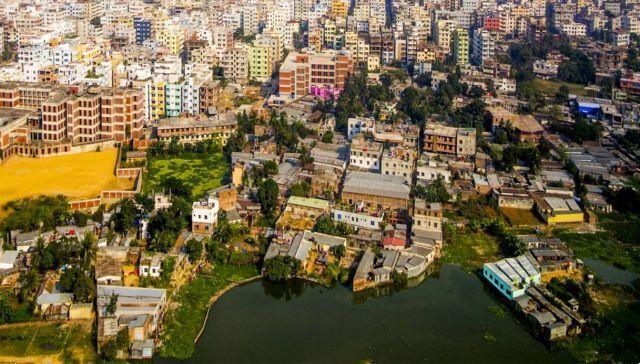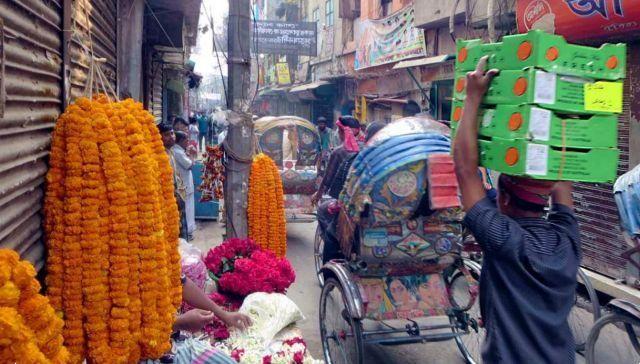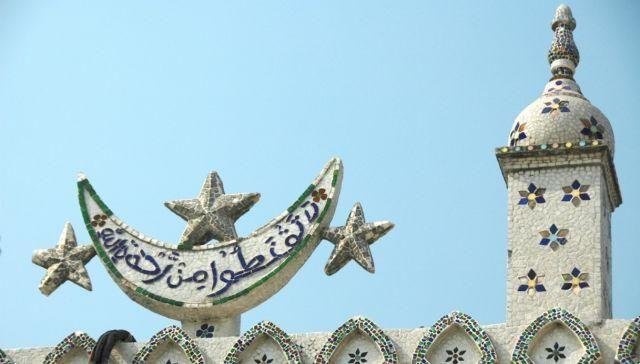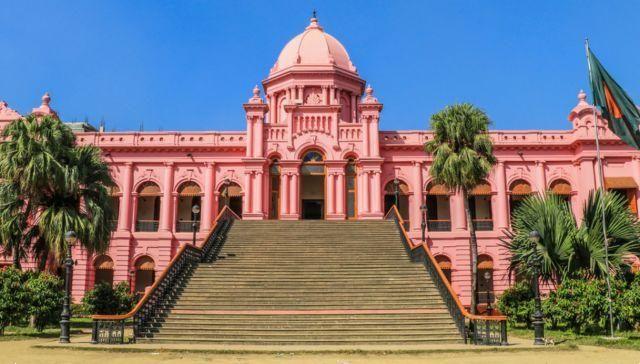
La capital of Bangladesh it is located in the central region of the country, along the Buriganga river, a tributary of the large Dhaleshwari waterway. Due to the wealth of waterways it is called the Venice of the East and even today river transport is widely used to avoid congested city traffic and to reach nearby cities.
Known as Dacca or Dhâkâ, the capital of Bangladesh has many other names: it is in fact called the city of mosques due to the high presence of Islamic religious buildings and is also known as the rickshaw capital for the incredible number of rickshaws that crowd its streets. Even though today Dacca is a modern and busy city, it retains its ancient historical soul and its precious green spaces.
Dhaka it is characterized by four sectors that ideally divide the city. The Old City located on the riverfront, the central area, northern Dhaka and the outer suburbs that surround the capital from north to east with the industrial areas and Shahjalal International Airport, the gateway to Bangladesh for many tourists.
The discovery of the capital of Bangladesh starts from the old city, located in the southern part of modern Dhaka. The city became rich and powerful under the dinastia Moghul and even today more than 2000 buildings built between the XNUMXth and XNUMXth centuries are preserved in the old city along the river. In the central area are the large parliamentary complex and the financial heart of the country.
This central area has also become a cultural center hosting universities, museums, art galleries and numerous monuments. In addition to the Mughal buildings you can admire the colonial buildings: the city was in fact under the control of Great Britain, whose dominion began in the colonial era, in 1765. Dacca became the capital of Bangladesh in 1971, when the new state finally became independent from Pakistan, which controlled the region since 1947.
North Dhaka, the northern district of the Bangladeshi capital, revolves around the elegant Gulshan-Banani neighborhood, which is home to the diplomatic area, as well as numerous five-star hotels and restaurants. The industrial area is located in the Mirpur area; of tourist interest we find the city zoo, the cricket stadium and the botanical garden. The most popular sports in Dhaka and across the nation are cricket, football and badminton; Hadudu, a particular team contact sporting activity, is also a national sport.
Dhaka has grown over the 200st century both demographically and economically. Currently in the capital of Bangladesh there are over XNUMX skyscrapers that have changed the skyline of the historic city. Many more will be built in the coming years, seeking to reach ever greater heights. Today the City Center, at 170 metres, is the tallest building in the capital.
La Language the most used is Bengali, the national language, but English is understood and spoken by a large part of the population in the capital and in the rest of Bangladesh so don't worry: the locals will do everything they can to help you and make themselves understood. The most widespread religion is Islam, but Hinduism, Christianity and Buddhism are also present.
Il climate in Dhaka it is subtropical: the monsoon season in the capital runs from April to September and is characterized by a hot and humid climate. Many tourists choose to visit Bangladesh during the winter, when temperatures and humidity are lower.

The city has a lively cultural life. The celebrations for Independence Day, on March 26, for International Mother Language Day, on February 21, and for Victory Day, on March 26, are very heartfelt and every year thousands of people celebrate these events in the square and close to the symbolic monuments. April 14th is Pohela Boishakh, the Bengali New Year. Every year hundreds of thousands of people pour into the streets of the capital of Bangladesh to celebrate the start of the new year together.
Despite the spread of the Western lifestyle, many Bangladeshis continue to wear them every day traditional clothes. Women wear traditional salwar kameez or saris, one of the oldest dresses in the world still widely spread in Southeast Asia today. The sari dress is considered a symbol of grace in the cultures of the Indian subcontinent; today many tourists buy them as souvenirs.
The capital of Bangladesh is known for the production of Jamdani saree hand woven. The art dates back to the Mughal era but during British colonialism the tradition of hand weaving risked being lost in favor of industrial weaving. Today the traditional art of jamdani weaving has been declared by UNESCO as an intangible cultural heritage of humanity.
An excursus on Bangladeshi cuisine would deserve an article in itself. We recommend you try it traditional dishes of Dacca and let yourself be tempted by the specialties of the capital: the long history of Bangladesh has given its inhabitants a versatile and rich cuisine, influenced by different peoples. It should be kept in mind that the Old City of Dhaka has preserved its own specific culinary tradition, some special dishes you can only taste here. To try!






